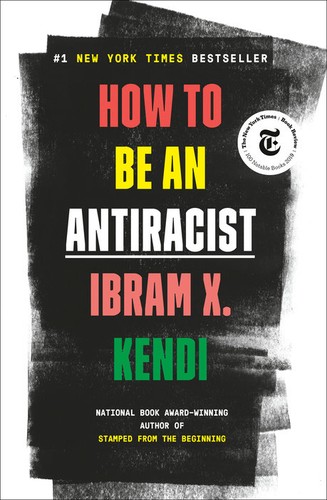Frecklemaid reviewed How to Be an Antiracist by Ibram X. Kendi
Review of 'How to Be an Antiracist' on 'Goodreads'
1 star
In 'How To Be an Antiracist', Ibram X. Kendi attempts to provide a meaningful guide and exposition of his position on race and racism which reconsiders the idea that one can be "not racist". There are so many interesting and important ideas explored throughout this book, ranging from the question of Anti-White racism to intersection of sexism and homophobia with racism (and conversely, antiracism.) However, his exploration is at times convoluted and self-contradictory, and his writing style is very repetitive.
A significant issue that I ran into with this book was the definitions, something which he spends a large portion of the book on. The definitions used are more-so to frame the perspective of a given chapter and provide further perspective on an issue, which means that they don't always follow the way the word is practically used. His definition of racism, for example, unites both policy and idea as necessary to its action. This is an argument he uses to support initiatives of positive discrimination. In essence, to treat equally is not to treat the same, a base of “antiracist policies”. However, the one I've always used is "prejudice, discrimination, or antagonism directed against a person or people on the basis of their membership of a particular racial or ethnic group" (Oxford Dictionary), which specifically does include discrimination. Kendi also includes multiple ‘definitions’ for the same word which are generally complementary but are not semantically indifferent. For example, antiracism is described both as “one who is supporting an antiracist policy through their actions or expressing an antiracist idea” and “one who is expressing the idea that racial groups are equals and none needs developing, and is supporting policy that reduces racial inequity.” While both essentially describe being against policies and ideas which are racist, the latter narrows an “antiracist idea” to one which reduces “racial inequity.”
The use of statistics throughout this book illustrates the stark racial inequity between African-Americans and other racial and ethnic groups in the United States. While I found that these were useful and clearly demonstrated inequity, his use of statistics in general lacked nuanced contextualisation and the reader is left to assume that everything is down to racism, which I believe oversimplifies the issues. In fact, Kendi notes towards the end of the book that this is intentional - that to be antiracist one must view all racial inequity as the result of racist policy and not individual or generalised behaviours, criticising the "assimilationist belief" that one should expect all racial groups to meet a certain standard or idealised pattern of behaviour. However, his own argument on racial inequity is contradictory to this as he measures equity using socioeconomic outcomes which are undoubtedly influenced by patterns of behaviour. If one is to expect and strive towards ensuring equality in rates of poverty and higher education between racial groups then you must also acknowledge that to achieve the same outcomes within the same society similar behaviour must be exhibited. Furthermore, the idea that POC should be held to different standards and measures simply because there are inequities between racial groups in testing implies that he believes POC are not capable doing well in the same way as white people, which I find offensive.
Kendi also cherry picks data to suit his argument. This leads to misleading and illogical conclusions on which his argument about systemic racism hinges. For example, when presenting figures on disease rates in different U.S. ethnic groups he notes only diseases for which African-American's have a higher rate than White-Americans but doesn't mention that African-American's have lower rates for others, or in the case of Alzheimers have a lower mortality rate. He uses these figures to demonstrate systemic racism in the medical system, which is plain misleading.
The repetitive sentence structures and formulaic chapters made this book hard to read for me, with Kendi often repeating 'to be', 'to understand', 'to believe' etc. at the start of each sentence in a paragraph. This would have been effective in a speech but after 10 chapters of it it got really boring. However, I found the writing became less repetitive and far more interesting from Gender and Queer racism onwards. 'Failure' and 'Success' were also some of my favourite chapters, because they focused on antiracist activism more practically, although still failing to specify actual policies which must be removed or introduced. Antiracist policy is a necessary goal for an antiracist movement, but his assertion that policy is the only way to make meaningful change takes power away from the individual. The vague idea of racist and antiracist policy isn’t even given actionable goals and actual proposals are sorely lacking. This combined to make it read more like ministry than politics.
The most useful takeaway from this book is that there is no in-between racism and antiracism - that one cannot claim to be a ‘not racist’ bystander. But you could get that from google. Among others, I did really enjoy the breakdown of systemic racism as a notion and the effects of using it in discussion. Often, systemic racism is assumed to be understood and proven without it ever being explained, although after my issues with the use of data in this book I'm not sure his is the best explanation to be found. If you’d like to understand some of the vocabulary and ideology of the current conversation around race, this is certainly a useful read. However, don't assume that the popularity of this book marks brilliance.
Note: I was given a free copy of this book in exchange for an honest review. I would like to thank Ibram X. Kendi, NetGalley and Random House UK for the opportunity.

